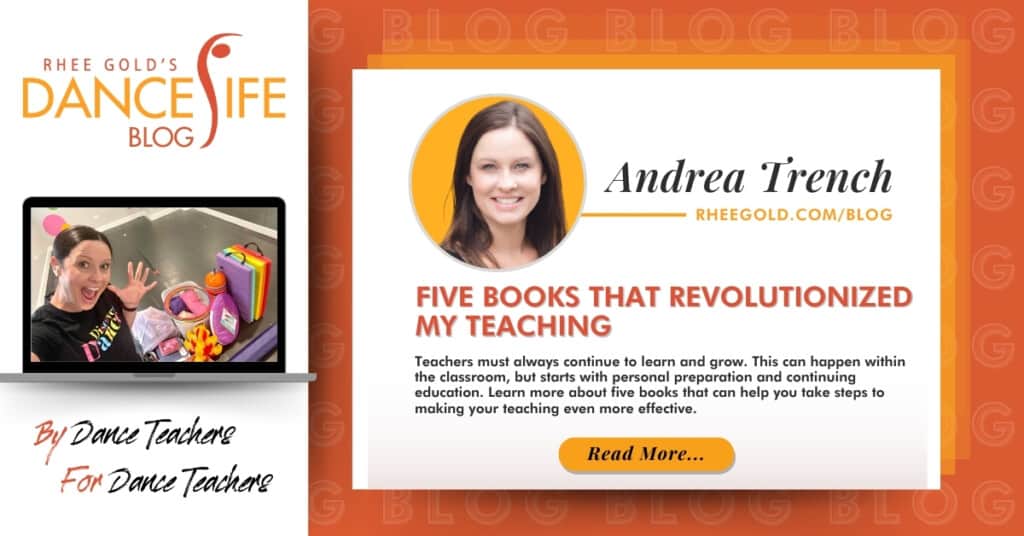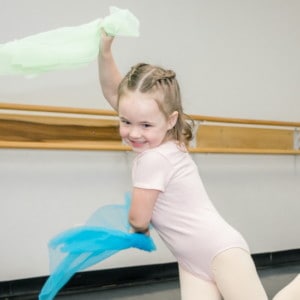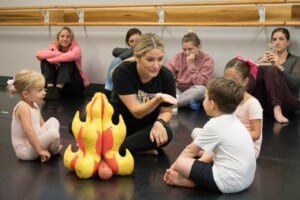Five Books that Revolutionized My Teaching

I am always on the hunt for professional development resources. Whether it’s books, podcasts, webinars, online courses, or in-person training, I’ll never pass up the opportunity to learn from others. When it comes to learning about early childhood dance education, I have found my resources limited. I often turn to parenting and child development resources, then apply those to the dance studio setting. Today, I am sharing five books that have revolutionized my teaching. That’s not an exaggeration. I would not be the teacher I am without these resources and I am excited to share a bit about them below.
Creative Dance for All Ages by Anne Green Gilbert
This was THE book that changed everything. I started teaching early childhood dance classes when I was 16 years old. I had zero experience, zero resources, and zero business leading a class of 3-5 year olds.
There was one good thing that came from that experience… I fell in love with teaching. While receiving my BFA in dance at the University of Illinois at Urbana-Champaign, I knew I had to take Kate Kuper’s Creative Dance for Children’s course. It was that class that introduced me to Anne Green Gilbert and conceptual teaching. Creative Dance for All Ages, now in its second edition, was our textbook for the course. In this book, we learned the fundamentals of teaching creative dance, how to create lesson plans, and the importance of conceptual learning. This book breaks down fifteen concepts of dance and offers hundreds of creative explorations and skill development activities. Since graduating nearly 20 years ago, I still look to this book for inspiration and class ideas. Not only that, but I have taken the creative dance aspect into other styles of dance and have adapted conceptual teaching into my ballet, tap, jazz, hip hop, and acro classes. Don’t let the title fool you. Conceptual teaching is for all styles of dance, not just creative dance.Brain-Compatible Dance Education by Anne Green Gilbert
Also in its second edition, Brain-Compatible Dance Education is the book that taught me dance education is so much more than just the steps. It shares the connection between the brain and body and includes the principles that are needed for a solid dance education. This book breaks down each aspect of a lesson plan from warming up to creating, and offers many lesson plan samples for all ages and stages of development. In addition, it dives deep into the BrainDance, which is a warm up I now use for all my classes no matter the age, stage of development, or style of dance. After 20 years of studying Anne’s work, I was finally able to attend her Summer Dance Institute for Teachers last summer. I cried my eyes out as we performed our first BrainDance together! Brain-Compatible Dance Education and Creative Dance for All Ages were the textbooks for that training. If you enjoy these resources and are ready to dive in more, be sure to check out her annual Summer Dance Institute for Teachers. You can get both of her books and learn more about the workshop at CreativeDance.org.
How to Talk So Kids Will Listen & Listen So Kids will Talk by Adele Farber and Elaine Mazlish
This is one of those books that I still refer back to time and time again. It’s a parenting book that I’ve had on my shelf way before I had my own kids. This book is my go-to because it gives real-life examples on the
ways we speak to children and the effect those ways can have on their development. From working through feelings, effective ways to praise, alternatives to punishment, and more, you will read different examples of how to speak and also be prompted to write your own thoughts and ideas. It’s an easy read that you can skip through to find what you need at the moment. It has definitely helped me build stronger relationships with my students of all ages.A Moving Child is a Learning Child by Gill Connell and Cheryl McCarthy
This book has so many highlighted aha moments, underlined quotes, and post-it notes that I have to return to it often. It's jam-packed with information! The authors walk you through all aspects of child development and the impact movement has on that development. If you work with little ones, you need this reference in your life. A Moving Child is a Learning Child will help you understand and communicate why movement and dance class plays a crucial role in child development.
Punished by Rewards by Alfie Kohn
This book is a tough pill to swallow, but an important one for all who work with children. The researched examples of what happens to children when they are constantly fed empty praise, incentives, and bribes is eye-opening. I’ve never been one to bribe my students but, I am guilty of empty praises and, what I thought were harmless, incentives. The big takeaway is I don’t need these things IF I am creating an effective learning environment. It’s not about short-term behavior modification, it’s about motivating the students from the inside. Bonus tip-> Since applying the principles of Brain-Compatible Dance Education into my teaching, I no longer need punishments or rewards.
Lastly, I highly recommend any book by Rae Pica. She has too many to list, but I am pretty sure I have them all! Her advocacy for more movement in academic settings has this dance teacher jumping for joy. Her resources dive into why movement is important for children, which I can imagine would have all dance teachers jumping along with me!
What resources have revolutionized your teaching? I would love to add them to my collection.
Andrea Trench is dedicated to helping dance teachers create and deliver content that is research-based and developmentally appropriate for children under the age of 6. Her primary focus is classroom management, conceptual teaching, and foundational movement skill development in early childhood dance education. In addition, Andrea uses her 12 years of experience as a partner in a dance studio to inspire, equip, and empower educators.









